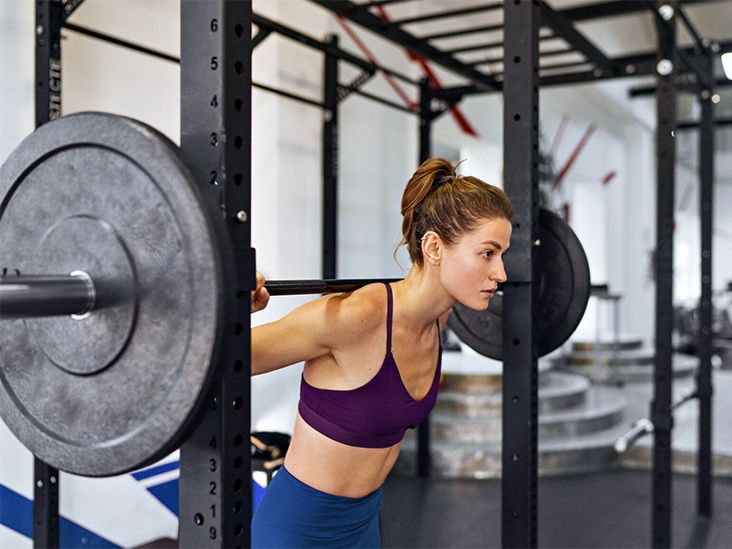Front Squat Muscles Worked: Benefits & Common Mistakes

Unlock front squat benefits and muscles worked from legs to arms. Our guide covers tips, common mistakes, and safe techniques to maximize gains and minimize injury risks.
A gym sesh would hardly be complete without some squats — and with more than 40 types to choose from, you’ll never get bored. Hold your squat jumps or chair squats for just a minute, though. Today you’ll learn how to master a front squat.
Ready to squat like a pro? Here’s how.
If you have your barbell ready, here’s how to make your move:
- Start with your feet about hip-width apart, toes pointed slightly out.
- With hands slightly wider than shoulder-width, grip the barbell across the front of your shoulders.
- Keep the barbell close to you, elbows high.
- Squeeze your core, keep your chest up, and your spine straight.
- Push your hips back and bend at the knees.
- Go down until your thighs are about parallel to the floor.
- Take care to keep your weight evenly distributed across both feet.
- To help maintain a straight back and chest, gaze straight ahead.
- Push through your heels to return to the starting position, squeezing your glutes as you do to maintain balance.
- Take a deep breath and start another rep.
Front squats have a variety of benefits, including:
- boosts bone health through repetitive resistance training
- strengthens major muscle groups (quads, glutes, core, back, shoulders)
- improves posture by encouraging a straight spine and strengthening the back
- gives your quads and glutes an aesthetic boost thanks to repetitive leg hypertrophy
Like Hannah Montana once sang, “Everybody makes mistakes, everybody has those days.” Luckily, you can always learn from them.
Here are a few common mistakes and how to correct them.
- Dropping your elbows
- Leaning too far forward
- Not engaging your core
- Letting your knees cave in
- Using arms to support the bar
- Putting the bulk of your weight on your heels or toes
- Placing your feet narrower or wider than shoulder-width
Are you just getting started with weightlifting? It’s best to take it slow and begin with lighter weights, gradually increasing as you build strength. Working with a personal trainer or finding a spotter when you’re starting out is also smart.
Try beginning with a barbell weight that allows you to comfortably do 10 reps. Aim for an effort level of about 7 out of 10 to maximize your strength and muscle growth. You should feel challenged, but not to the point where you risk injury.
Generally, 3 to 4 sets of 5 to 12 reps should give you solid results over time.
Although most squats are primarily a lower-bod move, the front squat fits in plenty of upper-body action. The front squat targets your:
The front squat is a compound exercise that’s great for maxing out your muscles from head to toe, calves to delts. Hold the barbell across the front of your shoulders, squat down until your thighs are parallel to the floor, taking care to stay upright.
Since this move can be tricky for newbies, consider working with a personal trainer to get started.








